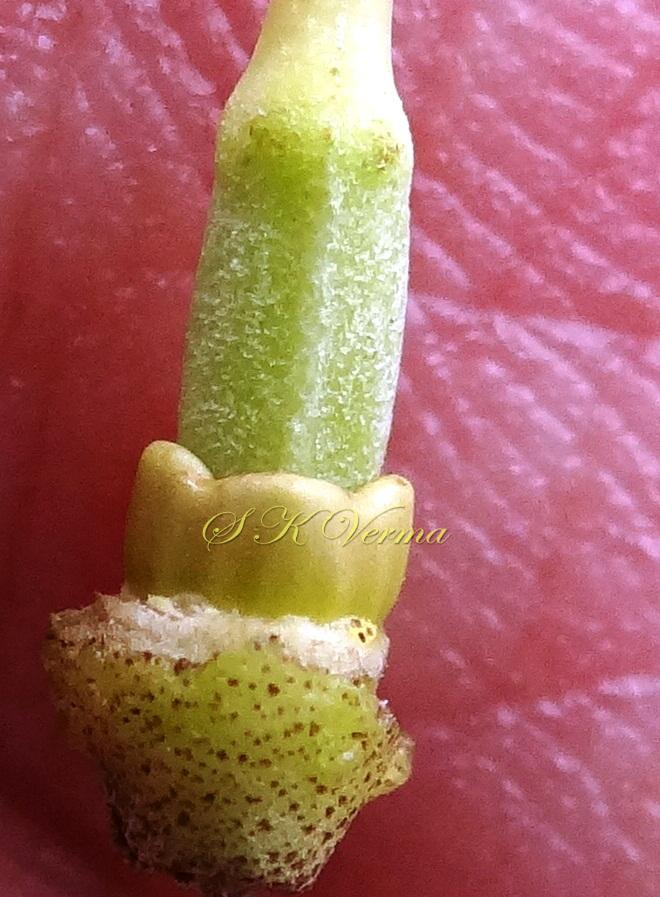TABEBUIA
Tabebuia
Gomes ex DC., Bibioth. Universelle Geneve, ser. 2, 17: 130. 1838.
Shrubs to large trees, evergreen or dry season deciduous; wood not dense or hard, heartwood not distinct from sapwood, lacking lapachol, Leaves simple, 1-foliate or digitately (palmately) 3-7-foliate., with sessile or stalked lepidote scales. Inflorescence terminal panicle or raceme with few lax or congested flowers, without well-developed central axis; rarely flowers solitary. Flowers large, bisexual, actinomorphic or slightly zygomorphic, pentamerous, hypogynous, showy. Calyx cupulate, campanulate or tubular, truncate, irregularly 2-3-lipped or shallowly 5- lobed or spathaceous. Corolla tubular-funnelform to tubular-campanulate, glabrous or puberulent on outside, white, to pink, lilac, rarely red, often with a yellow throat, yellow in 2 species (T. aurea and T. nodosa). Stamens 4, didynamous; anthers bithecous, thecae straight or divaricate, glabrous; staminode small. Carpels 2, syncarpous; ovary linear-oblong, often somewhat lepidote, 2-locular, ovules many per loculus, 2-3-seriate on axile placentas. Disc pulviniform (cushion shaped). Fruit a subterete elongate-linear or short-oblong capsule, sometimes ribbed, glabrous except for lepidote scales; dehiscence more or less perpendicular to septum, smooth to irregularly wavy muricate. Seeds thin, 2-winged, wings hyaline, membranous and sharply demarcated from seed body.
74 species
Tabebuia aurea
Tabebuia aurea
(Silva Manso) Benth. & Hook. f. ex S. Moore, Trans. Linn. Soc. London, Bot. 4: 423. 1895; Bignonia aurea Silva Manso, Enum. Subst. Braz. 40. 1836; Tabebuia argentea (Bureau & Schum.) Britton, Sc. Surv. Porto Rico and Virgin Islands 6: 197. 1925; Tecoma argentea Bureau & K. Schum., Fl. Bras. 8(2): 332. 1897; Tecoma aurea (Silva Manso) DC., Prodr. 9: 222. 1845.
Deciduous medium-sized 8 m tall (-15 m) tree with light yellowish-brown to brownish-grey bark, longitudinally fissured; main trunk and branches crooked with generally downward bending, canopy asymmetrical. Leaves opposite, or subopposite, digitately (palmately) compound, leaflets 5-7(9), generally 5; petiole up to 14 cm long, petiole base pulvinate; leaflets petiolulate, petiolules 1-6 cm long; leaflets elliptic-oblong, unequal in size, 3 cm x 1 cm to 21.5 cm x 4.8 cm, coriaceous, base acute, round, sometimes unequal, margin entire or wavy, apex acuminate, mucronate; both surfaces lepidote (covered with silvery scales); lower surface silvery-grey, upper surface green. Flowers tubular-funnelform, bisexual, actinomorphic or slightly zygomorphic, pentamerous, hypogynous, yellow, 5-8 cm long and 4.5-6 cm across in terminal clusters up to 40 on leafless branches (repeated dichasial cymes), peduncle/rachis not distinct; pedicels ca 1.5 cm long. Calyx tubular-campanulate, coriaceous, 1.5-1.8 cm long; tube 1.2-1.4 cm long, straight; lobes 5, irregularly connate into 2 or 3 lobes, 3-4 mm long, triangular. Corolla yellow, tubular-funnelform or trumpet-shaped; corolla tube 5-5.5 cm long, straight, 2.5 cm broad at throat, throat with dark orange-brown lines, abruptly narrow at base in calyx tube; limb 4.5-6 cm broad, 5-lobed, lobes nearly equal, 2-2.5 cm long, obtuse, emarginate, wavy, irregular. Stamens 4, didynamous, longer stamens with 2 cm long filaments, shorter stamens with 1.3 cm long filaments, filaments long glandular hairy at base; anthers bithecous, thecae ca. 4.5 mm long, divaricate; staminode 1, small, 8-10 mm long. Carpels 2, syncarpous; ovary ca. 5 mm long, lepidote, 2-locular, 2 series of ovules on each placenta, placentation axile; style ca. 23 mm long; stigma 2 mm long, 2-lobed, lobes flattened, rhomboid. Disc cupulate, 5-lobed. Capsules 8-15 cm x 1.5-2.5 cm, narrowly cylindrical with scales. Seeds up to 4 cm wide, flat with 2 opposite membranous wings on each side; seeds in 4 rows.
Common Names: Carribean Trumpet Tree, Silver Trumpet Tree, Yellow Tabebuia.
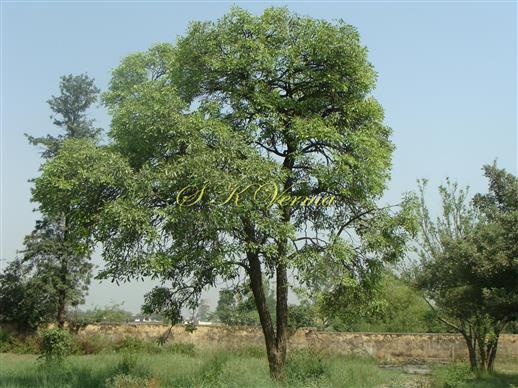
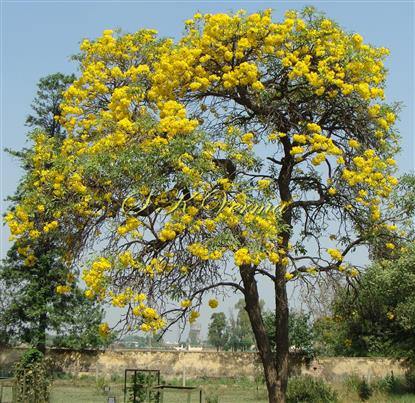
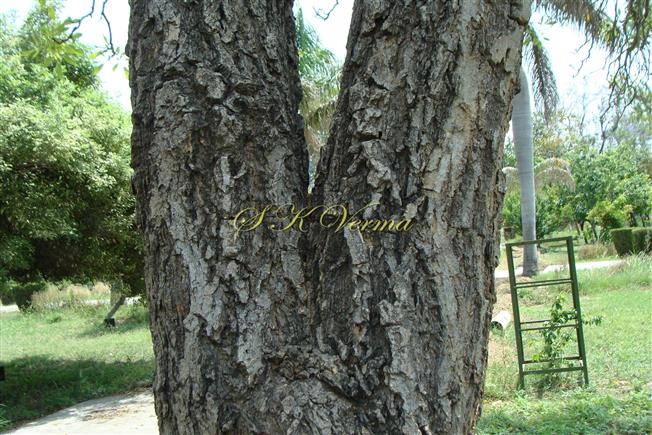
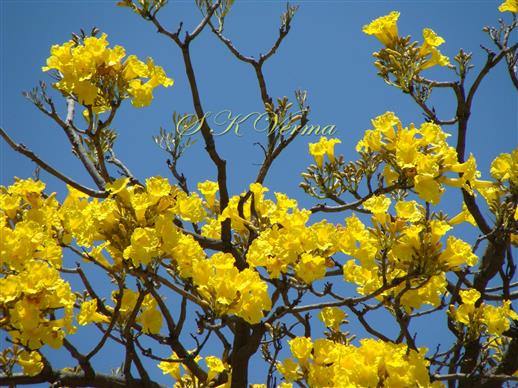
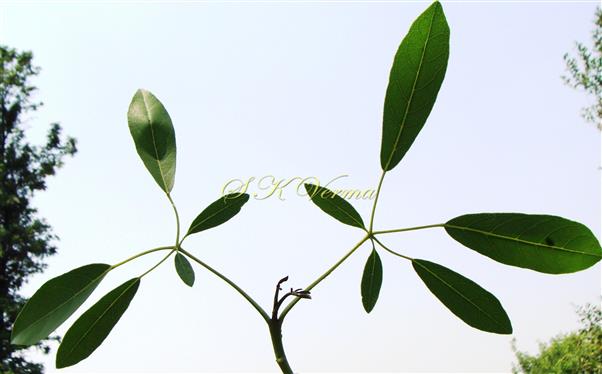
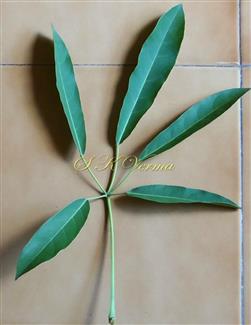
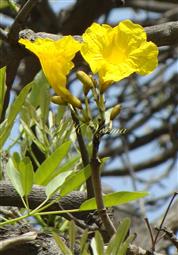
-3676.jpg)
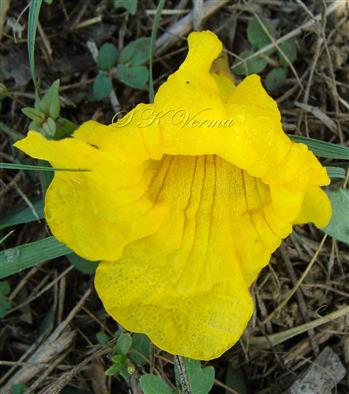
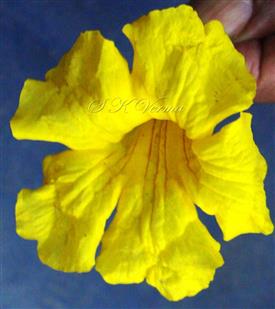
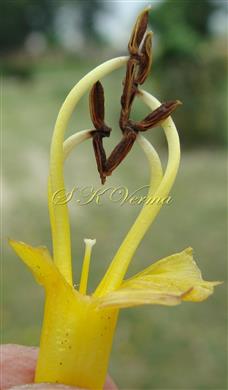
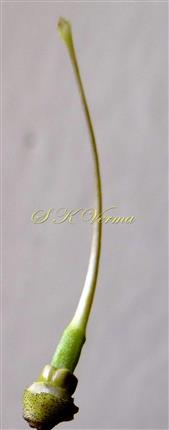
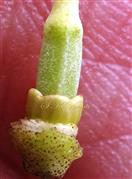
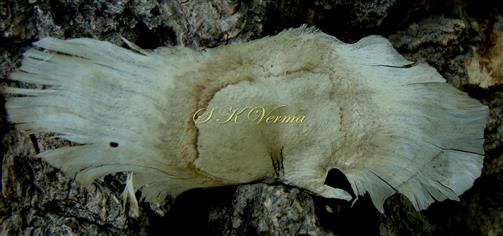








-3676.jpg)




